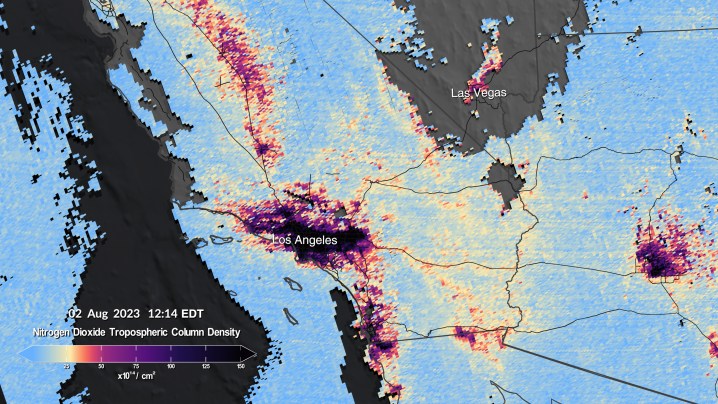A new NASA satellite designed to monitor pollution from space has shared its first images, showing how it will be able to track air pollution across North America. The TEMPO, or Tropospheric Emissions: Monitoring of Pollution, instrument was launched earlier this year in April and has been observing the Earth from its orbit 22,000 miles above the equator.

TEMPO is able to measure air pollution with high resolution, down to a few square miles, and can show changes in pollution occurring in short time frames. That will allow it to gather data on factors affecting air pollution like rush hour traffic or smoke from wildfires.
“Neighborhoods and communities across the country will benefit from TEMPO’s game-changing data for decades to come,” said NASA Administrator Bill Nelson in a statement. “This summer, millions of Americans felt firsthand the effect of smoke from forest fires on our health. NASA and the Biden-Harris Administration are committed to making it easier for everyday Americans and decision-makers to access and use TEMPO data to monitor and improve the quality of the air we breathe, benefitting life here on Earth.”
The first images from TEMPO are available in a series of visualizations, including two pollution maps showing the region around Los Angeles between midday and 4 p.m. on the same day. The maps below show the levels of nitrogen dioxide in the air on August 2, with darker colors representing higher levels. Other visualizations show pollution around major urban areas such as New York and Washington or Houston and New Orleans.


“TEMPO is beginning to measure hourly daytime air pollution over greater North America,” said TEMPO principal investigator Kelly Chance. “It measures ozone, nitrogen dioxide, formaldehyde, aerosols, water vapor, and several trace gases. There are already almost 50 science studies being planned that are based around this new way to collect data.”
This early data was collected as part of the calibration process for the primary TEMPO instrument, a spectrometer that measures pollution by seeing what wavelengths of light are absorbed by gases in the atmosphere. In its full operations, the satellite will take hourly scans during daylight hours, covering an area from central Canada down through the U.S. and down to Mexico City.
Editors’ Recommendations
Services Marketplace – Listings, Bookings & Reviews